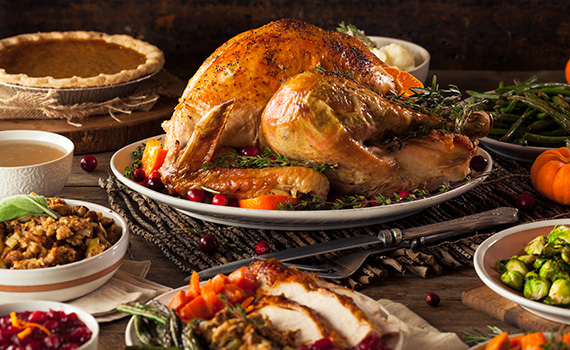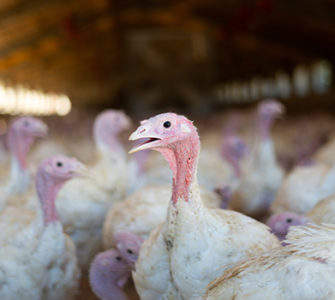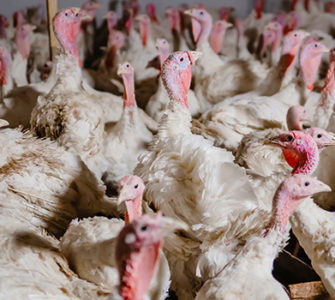44 million ‘respectable’ birds on the menu this Thanksgiving
If one of America’s founding fathers, Benjamin Franklin, had his way in the late 1700s, the turkey would have been the US national bird instead of the bald eagle — a majestic but imposing raptor that Franklin thought had a “bad moral character.”
The turkey, he insisted in a letter to his daughter, was a “much more respectable bird” to represent the country.
The turkey will most certainly be respected this Thursday, November 23, when 88% of Americans make the farm-raised variety of the bird the centerpiece of their Thanksgiving feast, according to the National Turkey Federation (NTF). In 2017, that translates to about 44 million turkeys, NTF says.
700 million pounds
The average weight of turkeys purchased for a Thanksgiving feast is 16 pounds, meaning that Americans will gobble down more than 700 million pounds of turkey over the Thanksgiving holiday weekend. Some purchased birds will tip the scales to 25 to 30 pounds. A turkey typically has about 70 percent white meat and 30 percent dark meat.
Thanksgiving turkeys are traditionally roasted, but more and more Americans are opting to deep fry their birds, which produces a golden brown, crispy exterior with moist, tender meat.
While the first Thanksgiving with Native Americans and early settlers took place in Plymouth, Massachusetts, in 1621, it didn’t become a formal celebration until 1863, when President Abraham Lincoln proclaimed it a national holiday.
Historians say it’s possible wild turkey was on the menu at the first Thanksgiving, but it wasn’t a common food at the time. More likely, venison was the main meat, in addition to pheasant, goose and duck — and possibly even some pigeon and swan. Lobsters and shellfish were likely on the table as well.
Bountiful choices
Consumer Reports published an article Nov. 14 urging Americans to buy organic turkeys or, at the very least, turkeys raised without antibiotics. But as they did last year, the editors neglected to report the cost difference between the two varieties.
Last week prices for fresh, conventionally raised whole turkeys ranged from $1.67-$1.70 a pound, according to the USDA National Retail Report for turkeys. USDA doesn’t track consumer prices for whole birds raised without antibiotics.
However, breast meat from what the USDA calls “specialty” birds — those raised on all-vegetable diets without antibiotics — averaged $5.93 a pound, compared to $3.23 for breast meat from fresh turkeys that received FDA-approved antibiotics under veterinary supervision and marketed after the mandated withdrawal times.
In addition to their many blessings, it seems Americans can be thankful for their bountiful choices at the meat counter.
Sending thanks, blessings and appreciation to our thousands of enthusiastic followers worldwide.
– The Editors
Posted on November 20, 2017

















